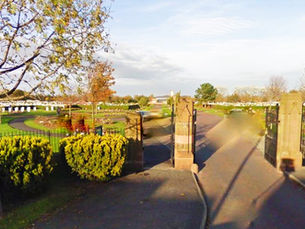'Forgotten Atlantis' explains riddle of Formby footprints
- Formby Bubble

- Jan 9, 2016
- 1 min read
New book claims Formby footprints could be twice as old as previously thought

Philip Runggaldier’s novel, The Forgotten Atlantis?, explores the story of how modern humans entered Britain 45,000 years ago and joined together to survive the Ice Age.
A new book claims to explain the origins of Formby's prehistoric footprints came about.
The footprints began to appear in Formby beach in the 1950s, when walkers began to notice markings in the sand, similar to hoofprints from cattle.
But now Philip Runggaldier’s novel, 'The Forgotten Atlantis?', tells the story of how modern humans entered Britain 45,000 years ago and joined together to survive the Ice Age.
And the novel reveals that Formby's footprints could be 14,000 years old, rather than the 7,000 previously estimated.
Philip said: "New evidence shows that a huge glacial lake, known as Llyn Llion ‘the lake of floods’, formed within the Irish Sea Basin towards the end of the last Ice Age. The lake burst southwards 14,700 years ago, to rapidly drain the area, perhaps prompting local Stone Age inhabitants to venture onto the exposed muddy lakebed to see where all the water had gone or to collect stranded fish. The sun then baked the mud dry and preserved their footprints before the sea eventually reclaimed the area. It is the first time a theory has been put forward to explain the Formby footprints."
Story and photo source: Southport Visiter by Tom Duffy






.jpg)




















.jpg)


Comments